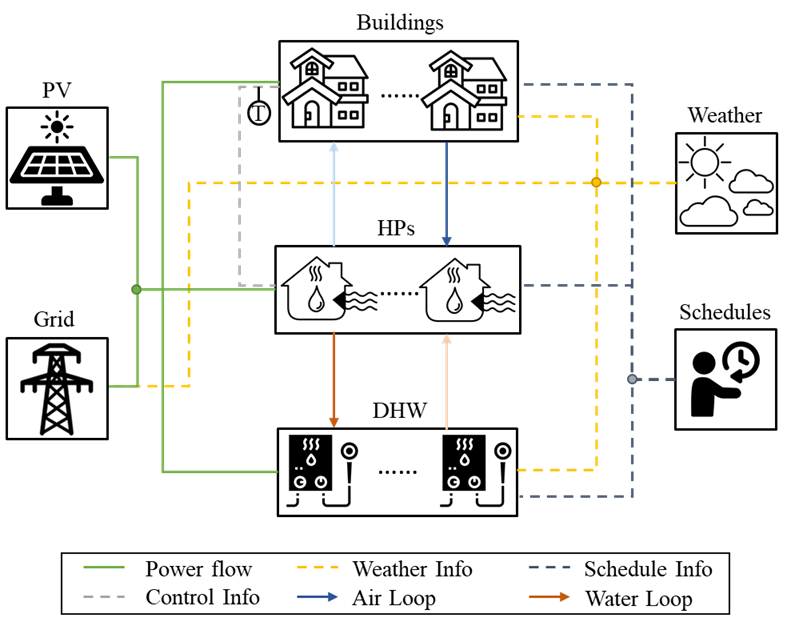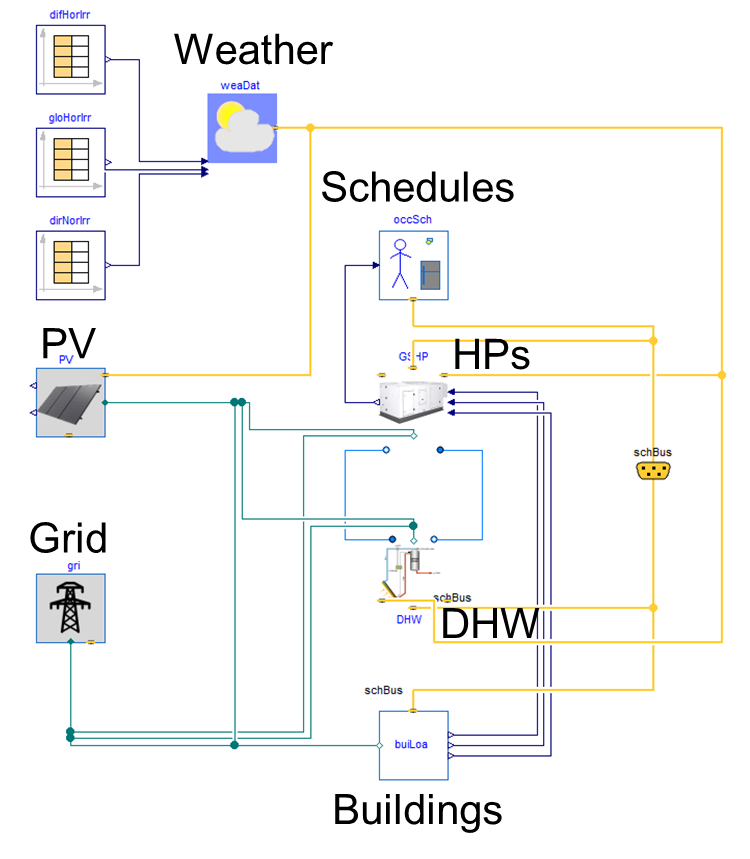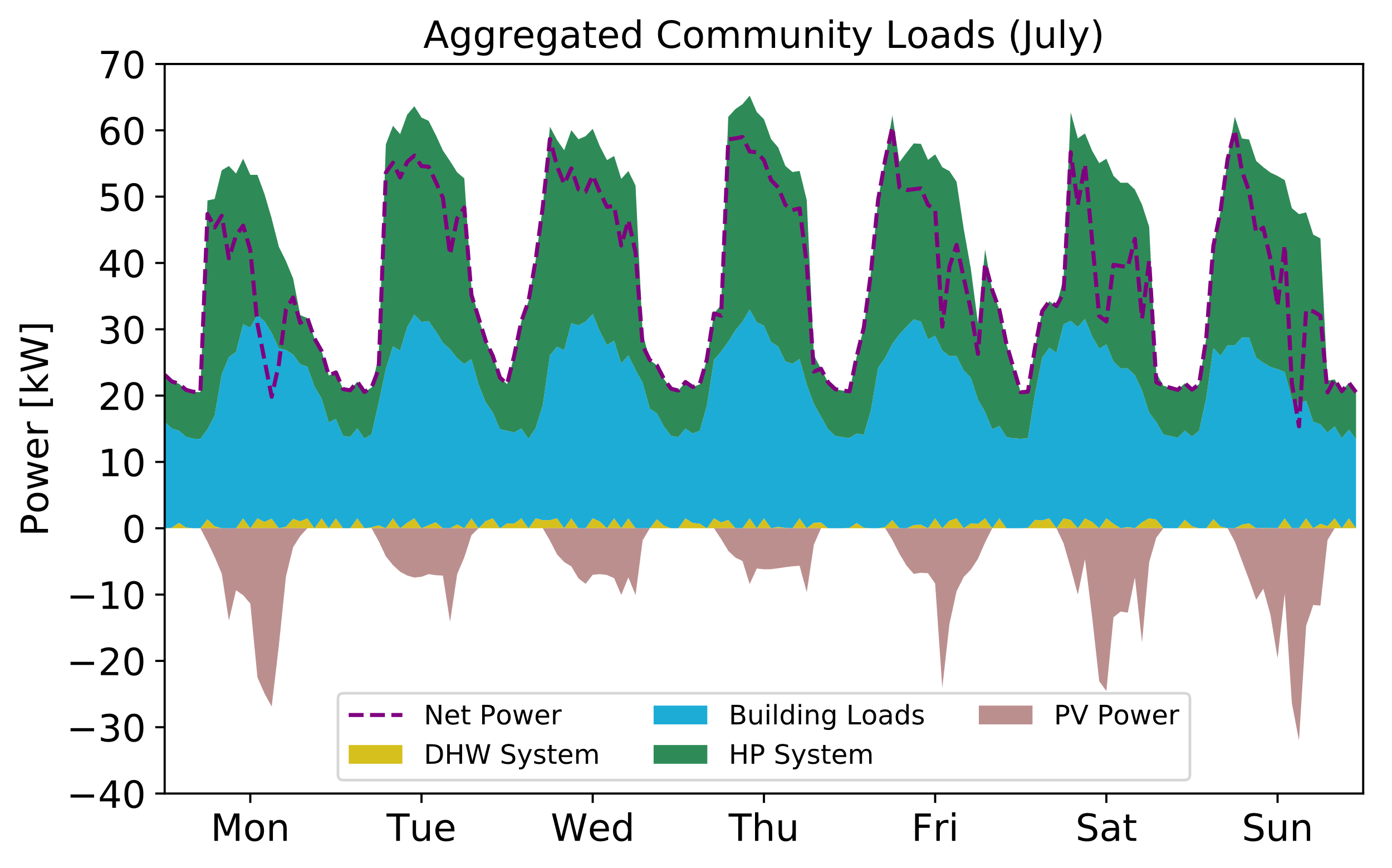Comprehensive Pliant Permissive Priority Optimization (C3PO)
This case study aims to build a community emulator based on a real-world Net-Zero Energy Community located in Anna Maria Island, FL, US. The community has onsite PV panels and reached net-zero energy in 2014. This emulator has seven submodules; namely, power grid, PV system, weather, schedule, ground-source heat pump system, domestic hot water system, and building loads. The PV system and building loads have been validated against measured data. The schedule module has the function of dynamic prediction of occupant presence. Based on this, in the HVAC system, we implemented occupancy-based thermostat control. Also, the prediction of significant building loads is correlated with occupancy status.

Fig.1 - Diagram of the community energy system model

Fig.2 - Modelica diagram of the top level of the community emulator

Fig.3 - Simulated community aggregated load in July



Factsheet
| Number of buildings | 5 |
| Number of thermal zones (per building) | 1-2 (9 in total) |
| Complexity of thermal zone model | Low order |
| Coupling/Decoupling between district network and buildings | Coupling |
| Simulation tool | Dymola |
| Modelica libraries | Buildings |
| Additional packages/workflows/scripts | BuildingsPy |
| Simulation time | One day |
| Computational time | 190 s |
| Solver and tolerance | Lsodar / 1e-4 |
| CPU speed | 3.5 GHz |
Authors:
Jing Wang (University of Colorado at Boulder - USA)
Jessica Stershic (University of Colorado at Boulder - USA)
Wangda Zuo (University of Colorado at Boulder - USA)
Sen Huang (Pacific Northwest National Laboratory - USA)
Draguna Vrabie (Pacific Northwest National Laboratory - USA)
Jing Wang (University of Colorado at Boulder - USA)
Jessica Stershic (University of Colorado at Boulder - USA)
Wangda Zuo (University of Colorado at Boulder - USA)
Sen Huang (Pacific Northwest National Laboratory - USA)
Draguna Vrabie (Pacific Northwest National Laboratory - USA)
References:
J. Wang, W. Zuo, S. Huang, D. Vrabie 2020. “Data-driven Prediction of Occupant Presence and Lighting Power: A Case Study for Small Commercial Buildings.” 2020 American Modelica Conference, Boulder, US.
J. Wang, W. Zuo, S. Huang, D. Vrabie 2020. “Data-driven Prediction of Occupant Presence and Lighting Power: A Case Study for Small Commercial Buildings.” 2020 American Modelica Conference, Boulder, US.
